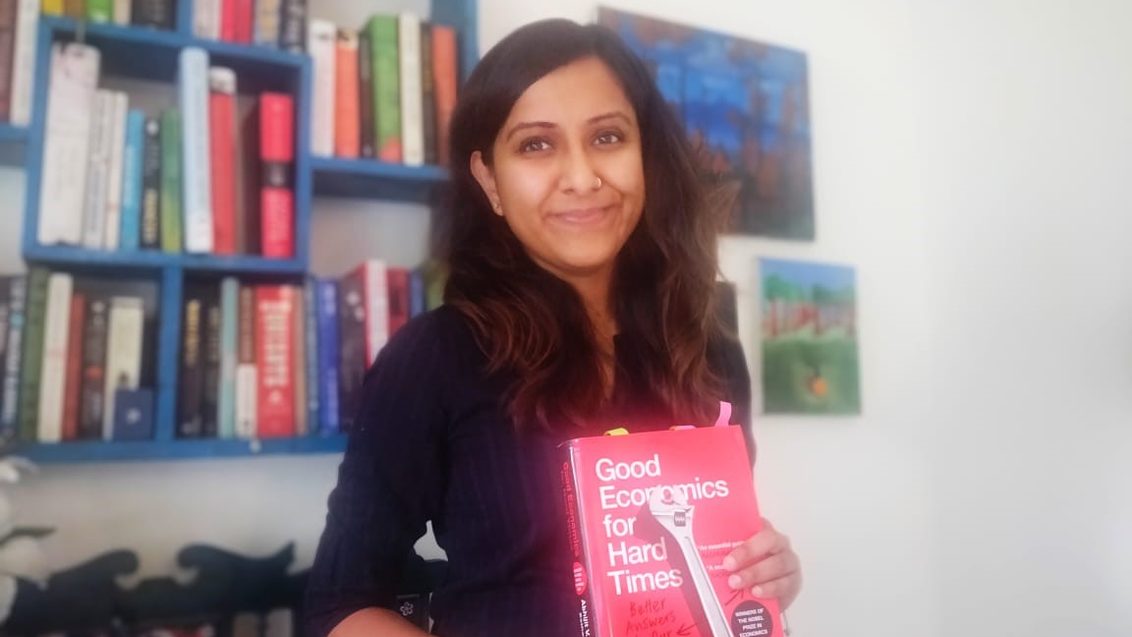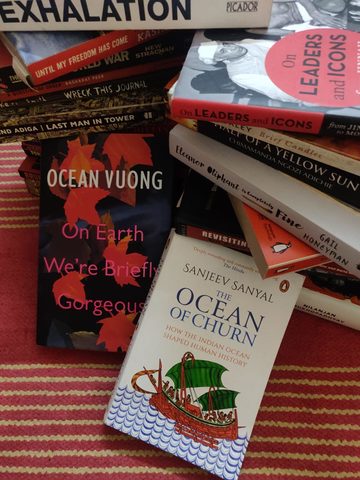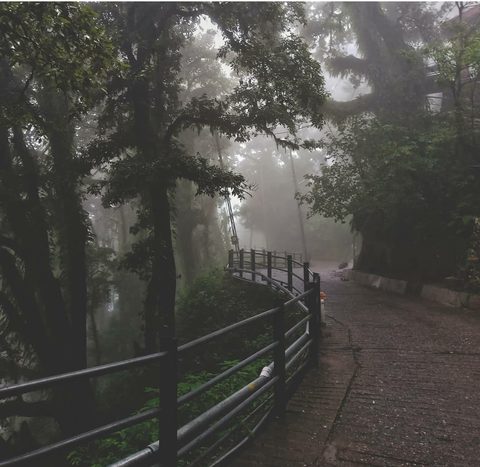When variety ends the Monday Blues

Who are the people behind the Syngenta Foundation? In our interview series, we now meet Parikrama Chowdhry. She leads Partnerships and Impact Evaluation for Syngenta Foundation India and also looks after Communications there.
Syngenta Foundation: What did you do before joining us?
Parikrama Chowdhry: I studied Economics at Delhi University’s Shri Ram College of Commerce. Later came an MBA at the Indian Institute of Management, Indore, specializing in Business Strategy and Marketing. Between my studies, I worked in Marketing Analytics for the McKinsey Knowledge Center and in Government Advisory at Ernst & Young. After my MBA, I moved to the online retail world, working for snapdeal.com on partnerships and strategic initiatives.
Of all the possible directions you could then have taken, why did you choose agriculture?
That’s a long story…! I once tried to start a ‘concept’ café on an organic farm. That led me to explore agriculture more generally, and the many challenges farmers face. (As well as showing me the fragility of a restaurant business model). Already at that time, I felt more suited to an appropriate role in the ag sector. The restaurant dream has been parked for later – and deeper pockets!
Your Syngenta Foundation role sounds very broad. What do you mainly do?
Listen to people and turn what they say into compelling arguments for partnerships. Those people include farmers, agri-entrepreneurs (AE), program partners, and Foundation colleagues. I try to understand their stories, needs, requirements, achievements, and risks, and underpin these with numbers. Then I can combine voices and data into presentations that help other people believe in us and want to partner in agricultural development.
What does that mean more specifically? Let’s take Partnerships first.
Scaling up means teaming up. Forging mutually beneficial collaborations is crucial for growth. We reach out to organizations and initiate partnerships. Many organizations also reach out to us. Together we plan the best way forward for smallholder benefits and AE growth. Recently, for example, we signed an agreement with The Nature Conservancy (TNC) on a unique model of entrepreneurship. This focuses on the stubble-burning in Punjab that annually chokes Delhi and large parts of northern India. (I think my lungs have a vested interest in this cooperation!)
And in Impact Evaluation?
Here I monitor our activities, assessing the results both quantitatively and qualitatively. I study the overall performance of our AE program and issue project-specific studies. Four large assessments last year helped us improve program design and provided a bedrock of insights for many activities. We are now initiating a study on the impact of COVID-19 on India’s rural economy. I am very fortunate to cooperate on evaluations with Sharan Ghai from the AE Growth Foundation. She’s so hardworking and enthusiastic!
Alongside all that, you also find time for other tasks…
Syngenta Foundation India has a very able team and great partners. My Communications work aims to present their accomplishments to appropriate audiences. Creating content for our various info channels, nationally and internationally, is an important part of this role. Beyond Communications, I am also involved in several cross-functional projects with various partners, and recently became one of the Foundation’s Champions for Diversity and Inclusion. Anybody who wants to know more is most welcome to get in touch with the Foundation.
What’s the most exciting part of your job?
It’s really exciting to see our AE program functioning, getting recognition, and growing, now through the AE Growth Foundation. But I work across a whole spectrum of interesting topics. On any day, my conversation partners can include farmers, Agri-Entrepreneurs, Indian and overseas scientists, ag-tech creators, policymakers… you name it. This variety has let me forget what ‘Monday Blues’ were made of!
You’ve been with us for well over two years. What skills have you gained in that time?
The Foundation tackles extremely complex systems and issues. They include entire supply chains, access to credit, local cultural contexts, gender, and environmental factors, all wrapped up together. This helps me develop my problem-solving skills, creativity, and critical thinking, backed by data analysis. Leading projects with large, highly diverse teams, as well as managing multi-dimensional work, enable further skill development. I also recently did a course at the Tata-Cornell Institute. That introduced me to quantitative and qualitative assessment techniques for policy evaluation. My work at the Foundation has enabled me to think about Indian agricultural policy in India, and some of these thoughts have appeared on various news platforms*.
Could you share a particular Foundation memory you have so far?
We were filming last year in Odisha. On camera, an AE broke down while explaining the earlier hardships from losing his land to moneylenders and being unemployed. He went on to explain the change that he was able to create for himself and his community after joining the AE program. He was able to get his land back and now helps other farmers earn good prices for their produce. The entire film crew was left in tears. That interview gave our work a whole new meaning.
Stepping back from the Foundation: What advice would you give to aspiring young female leaders?
So many women face institutionalized bias, unconscious or conscious. To echo Facebook COO Sheryl Sandberg: Women are constantly ‘leaning in’, and companies must now do the same. While women continue to put our best foot forward at work, we must also help ensure that our organization is highly committed to gender diversity and inclusiveness. This can start with just a small step of awareness-creation and develop into devising policies that promote equity and equality. We must get the conversation going and share our triumphs with others.
If you were Agriculture Minister, which D&I topic in Indian farming would be your top priority?
Land Rights for women! In India, every religious community continues to be governed by its own laws in several matters – property rights are one of them. Our Constitution guarantees equality and fairness. But for women, the property rights situation largely continues to be discriminatory and arbitrary.
Parikrama Personally
What’s your favorite food? Butter Chicken with Butter Naan!
Are you a coffee or tea person? Coffee – before and above everything else! Even in the middle and after everything.
What’s the best place you’ve traveled to? I travel often, but my favorite place remains close to home. There is a small town in the lower Himalayas called Landour. It’s quiet and quaint, with remains of colonial homes and bakehouses. Small hilly passageways lined with tall deodar trees, almost always wrapped in mist, make it a perfect place for people who love walking.
What about reading? Any special recommendations? I love reading, really anything I can get my hands on – fiction, graphic novels, mythology, history, politics, economics, or philosophy. By chance, my current top recommendations both involve the word ‘Ocean’. On the fiction side, I recently read Ocean Vuong’s “On earth we are briefly gorgeous”. It’s a beautiful epistolary novel that gives glimpses into the Vietnam war and immigrant life in America. For Indian history, my vote goes to Sanjeev Sanyal’s “Ocean of Churn”. It shows how the Indian Ocean shaped human history, with some brilliant findings, theories, and stories. I am currently working through Abhijit Banerjee and Esther Duflo’s “Good Economics for Hard Times”, an instructive choice for people working in the development sector.
Which colleagues would you like to be featured next in this series? I would say my colleagues Mr. Avijit Naik who heads innovation for the Foundation in India. He has worked here for a decade. Also, Mr. Rahul Tidake who looks after Market Linkage in India. And lastly Ms. Stella Kimani our Agri-services manager in Kenya.
*Here are three of Parikrama Chowdhry’s policy articles:
- Food Amid COVID: Demand, Prices, Supply & Curious Case of Veggies
- Zero Budget Natural Farming: Effective Tool or Inconsequential Nudge?
- Onion Prices: Worst Is Over, but Are We Prepared for Next Year?
Interested in what Syngenta Foundation employees in other countries say? In previous interviews in this series, we have heard from colleagues in:


